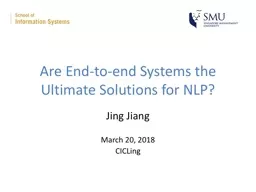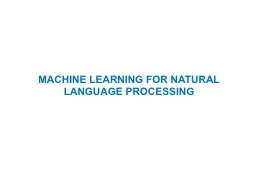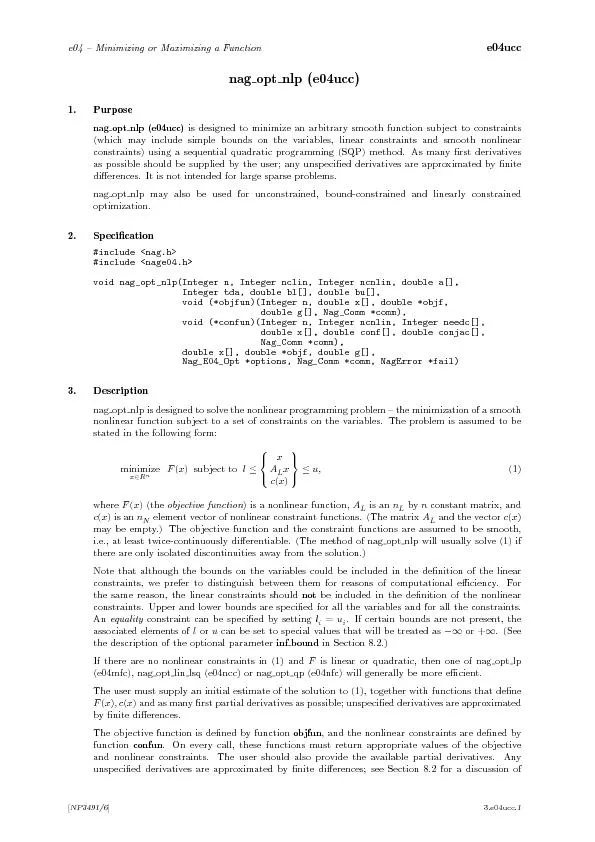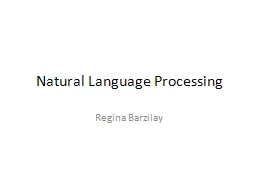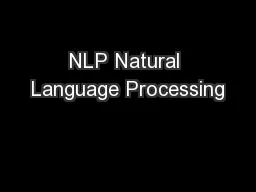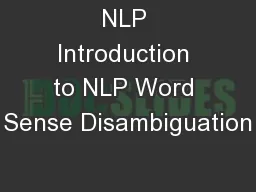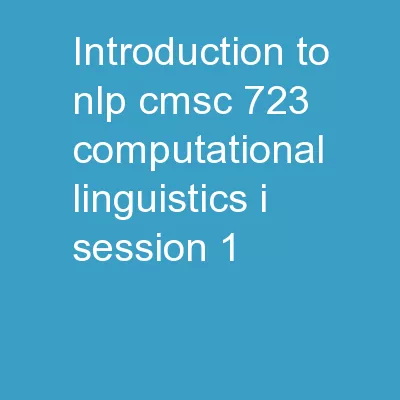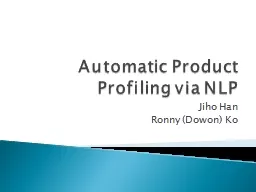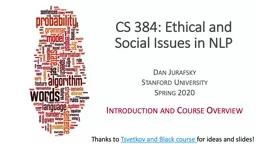PPT-Are End-to-end Systems the Ultimate Solutions for NLP?
Author : kittie-lecroy | Published Date : 2020-04-05
Jing Jiang March 20 2018 CICLing Background Recent years have witnessed a fastgrowing trend of using deep learning solutions oftentimes endtoend for NLP tasks Machine
Presentation Embed Code
Download Presentation
Download Presentation The PPT/PDF document " Are End-to-end Systems the Ultimate Sol..." is the property of its rightful owner. Permission is granted to download and print the materials on this website for personal, non-commercial use only, and to display it on your personal computer provided you do not modify the materials and that you retain all copyright notices contained in the materials. By downloading content from our website, you accept the terms of this agreement.
Are End-to-end Systems the Ultimate Solutions for NLP?: Transcript
Download Rules Of Document
" Are End-to-end Systems the Ultimate Solutions for NLP?"The content belongs to its owner. You may download and print it for personal use, without modification, and keep all copyright notices. By downloading, you agree to these terms.
Related Documents

